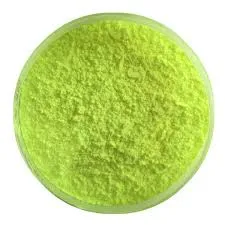The Coagulation Process in Water Treatment
Water is an essential resource for life, and ensuring its quality is paramount for public health and environmental sustainability. One of the critical processes in water treatment is coagulation, which plays a vital role in removing impurities and making water safe for consumption. This article explores the coagulation process in water treatment, its mechanisms, and its significance.
Coagulation is the first step in the water treatment process aimed at removing suspended particles, colloids, and dissolved organic material from raw water. This process involves introducing chemicals known as coagulants into the water. The most commonly used coagulants include aluminum sulfate (alum), ferric sulfate, and polyaluminum chloride. These chemicals work by neutralizing the electric charges of the particles suspended in the water. In natural water sources, particles tend to have a negative charge, which prevents them from clumping together and settling out. By introducing coagulants, the charge balance is disrupted, allowing particles to aggregate.
The coagulation process can be divided into several key stages rapid mixing, flocculation, and sedimentation. During the rapid mixing stage, the coagulant is introduced into the raw water, and vigorous agitation is employed to ensure that the coagulant is evenly distributed throughout the water. This stage is crucial for ensuring that the particles come into contact with the coagulant, facilitating charge neutralization.
Following rapid mixing, the water undergoes flocculation, a gentler mixing process that allows for the formation of larger aggregates known as flocs. In this stage, the small particles formed during coagulation collide and stick together, forming larger, visible clusters. The effectiveness of this stage is enhanced by optimizing mixing speed and duration, which can vary depending on the characteristics of the water being treated.
coagulation process in water treatment pdf

Once the flocs have formed, the next step is sedimentation. During sedimentation, the water is allowed to stand so that the heavier flocs can settle to the bottom of the treatment basin, forming a layer of sludge. This stage is critical, as it separates the majority of the solids from the cleaned water, allowing for further treatment processes such as filtration and disinfection.
The efficiency of the coagulation process can be influenced by several factors, including water temperature, pH levels, and the presence of natural organic matter. Adjusting the pH is often necessary to optimize coagulation, as certain coagulants are more effective within specific pH ranges. For instance, alum performs best at a slightly acidic pH, which helps enhance its coagulation properties.
In recent years, advancements in coagulation technology have led to improved water treatment processes. For example, the use of environmentally friendly coagulants or bio-coagulants derived from natural sources has been explored as alternatives to traditional chemical coagulants. Such innovations not only maintain the efficiency of coagulation but also reduce the environmental impact associated with chemical treatments.
The coagulation process is not limited to drinking water treatment but is also essential in treating wastewater and stormwater. In wastewater treatment, coagulation helps to remove suspended solids and contaminants, thus improving water quality before discharge back into the environment.
In conclusion, coagulation is a fundamental step in water treatment that significantly contributes to the removal of impurities and ensures safe drinking water. Understanding the mechanisms behind this process, alongside ongoing research and technological advancements, is essential for enhancing water treatment efficiency and sustainability. As water scarcity and quality issues become more pressing globally, refining coagulation processes will be critical in meeting the demands for safe, clean water for future generations.

